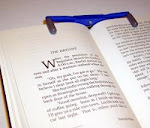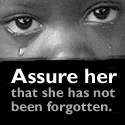I learn so much by reading historical fiction novels. The latest one I have read is ‘Courting Morrow Little ’ by Laura Frantz.
’ by Laura Frantz.
Here is the synopsis of this entertaining novel:
Caught between the wilderness and civilization, Morrow Little must find her way to true love.
Morrow Little is haunted by the memory of the day her family was torn apart by raiding Shawnee warriors. Now that she is nearly a grown woman and her father is ailing, she must make difficult choices about the future. Several men – ranging from the undesired to the unthinkable – vie for her attentions, but she finds herself inexplicably drawn to a forbidden love that both terrifies and intrigues her. Can she betray the memory of her lost loved ones – and garner suspicion from her friends – by pursuing a life with him? Or should she seal her own misery by marrying a man she doesn’t love?
This sweeping tale of romance and forgiveness will envelop you as it takes you from a Kentucky fort through the vast wilderness of the West.
Here is the biography of the author:
Laura Frantz is the author of The Frontiersman’s Daughter and credits her grandmother as being the catalyst for her fascination with Kentucky history. Frantz’s ancestors followed Daniel Boone into Kentucky in the late eighteenth century and settled in Madison County, where her family still resides. She is a member of the Kentucky Historical Society, American Christian Fiction Writers, and Romance Writers of America. Frantz currently lives in the misty woods of Port Angeles, Washington, with her husband and two sons.
and credits her grandmother as being the catalyst for her fascination with Kentucky history. Frantz’s ancestors followed Daniel Boone into Kentucky in the late eighteenth century and settled in Madison County, where her family still resides. She is a member of the Kentucky Historical Society, American Christian Fiction Writers, and Romance Writers of America. Frantz currently lives in the misty woods of Port Angeles, Washington, with her husband and two sons.
Morrow Little’s life was changed forever in July 1765 when Shawnee Indians infiltrated her home in the territory of Kentucke, killed her mother and baby sister; her brother Jess was kidnapped.
Another memorable incident occurred when Morrow was ten. A Shawnee Indian and his son, a little older than Morrow, arrived at her home. The boy was gravely ill. Her father allowed them to stay at their home, and nursed the boy back to health:
The Shawnee stayed for four days. As she and Pa tended to the boy, the tall Indian would go hunting in deep snow, bringing in all manner of meat. Rabbit, deer, even buffalo.
When the boy’s spots receded and Morrow’s began, the Indians finally went away. She lay on the filthy feather tick and wanted to die, but Pa and the Almighty kept her alive.
“You’re meant to live, Morrow,” Pa told her, rocking her by the fire. “Just like the Shawnee we helped save, God has a plan for your life.” (p. 23)
Fast forward to June 1778. Her father had sent Morrow to Philadelphia two years prior to live with his sister, her Aunt Etta. Here is the description of Morrow’s life over the past two years:
She slapped at a particularly large insect, thankful the army had finally evacuated at all. What was supposed to have been a simple six-month visit to her father’s sister in Pennsylvania when she turned sixteen had stretched to two years. Morrow had arrived in that great city with the Redcoats on her heels, and the cozy visit she’d envisioned had changed into one of near servitude as the British took Philadelphia. Aunt Etta’s humble dress shop in Elfreth’s Alley had become an astounding success as officer’s wives and the local ladies flocked to have gowns made for the weekly balls, horse races, and theatrical events. (p. 15)
After those two long years, she returned to her father and the home of her youth. This is how she thought of herself at that point:
She was a woman now. A woman who simply must master emotions before setting foot on Kentucke soil again. Yet her feelings were as fresh as the day she’d stood in the river and listened to her life being torn asunder. In her heart she was still five years old, watching her brother’s retreating back as he told her to stay still, returning to the cabin empty of her mother’s comforting presence, watching Pa erect a fence around two fresh graves. Nothing seemed able to cut the painful tether that bound her to the past, and the river was hurtling her forward, making her face it once again. Ready or not. (p. 24)
Her father, a pastor, had long along forgiven the Shawnee Nation for the loss of his precious family members. The Indian and his son whose life had been saved years ago continued to come and see them. Her father also had an interesting perspective on the land on which he resided:
“They come, as sure as the seasons. But I don’t blame them. We’re squatting on the sacred hunting grounds God gave them.”
She paused, thinking of the settlers pouring into the Kentucky territory overland or coming downriver. It was all the men had talked about on the keelboat. “Seems like we could all just abide together in peace. Isn’t there land enough for the both of us?”
“The Almighty only made so much land, Morrow, and the white man wants it all, so Captain Click says. The Shawnee know that and fight to keep the settlers out.” (p. 29)
Here is Morrow’s description of the Indian boy, Red Shirt, as he returned to visit them:
She was nearly slack-jawed with shock. Was this chief’s son? The boyishness that had once defined him was gone. He’d grown even taller since she’d last seen him, and his lithe form had fleshed out, filling his clothes with an understated elegance. There was something remarkable about him – an aura of barely restrained strength, like a panther about to pounce. She took a small step forward, but his dark eyes seemed to prevent her from taking a second. (p. 54)
As time went on, Morrow and Red Shirt had more and more encounters. Red Shirt had asked Morrow multiple times if she forgave his people for the atrocity that had been committed on her family. When she finally answered “yes” to the question, “do you forgive me – for my father’s people,” this is what happened to Morrow:
Before the word even left her lips, she felt an unburdening deep inside her, a telling softening and healing. Tears shimmered in her eyes, and she sensed he was as moved as she. (p. 153)
Morrow was a beautiful young woman, and there were many men who were interested in her. One of the men in her community, Robbie Clay, offered to help her father – who was very ill – on his farm, with the intention of marrying Morrow after her father’s passing. Morrow was very conflicted about the offer:
If she loved her father, wouldn’t she do this thing? He was so ill – dying – desperate for help about the farm. Truly, love was secondary to survival in the settlements. A man and a woman needed each other for practical reasons, sentiments aside. Yet she’d always hoped for more, abiding by the notion that love was a rare and precious thing, not to be squandered by second best. An enduring move helped weather the storms of life, was a shelter and a shade and a delight. She longed for a biblical love like Jacob had for Rachel. Like Solomon had for his Shulamite bride. She wanted a love she’d be willing to die for…like Pa. (p. 170)
Ultimately, another man interested in Morrow placed Robbie in the line of fire – it reminded me a lot of what King David did to Uriah in the Bible.
I was excited to learn that Red Shirt was an actual person (he is on the far right in the photo). Another actual person in history is George Rogers Clark, who was portrayed very unsympathetically in this novel.
One thing I have learned by reading historical fiction is this – I am glad to be living in the United States of America in the twenty-first century! Life in Kentucke (now the state of Kentucky) and what is now the United States was hard! Laura does a fabulous job of showing what life was like in 1778, when the United States of America was a new country.
I am also glad that Ms. Frantz showed U.S. history with a sympathetic eye to the Native Americans who were so brutalized and mistreated (in my opinion). We need to look at our history with an objective eye, and I appreciate Laura handling that matter with such compassion and love.
This book is wonderfully well written. Other agree with me on Laura’s writing; she’s just been nominated for the Carol Award, the Book of the Year award given by the American Christian Fiction Writers for her first book, ‘The Frontiersman’s Daughter ,’ in the Long Historical Romance category. The awards will be presented in September in Indianapolis. Congratulations to Laura on this honor.
,’ in the Long Historical Romance category. The awards will be presented in September in Indianapolis. Congratulations to Laura on this honor.
You can order this book here .
.
Available July 2010 at your favorite bookseller from Revell, a division of Baker Publishing Group. This book was provided by the publisher for review purposes.





























.jpg)







No comments:
Post a Comment